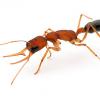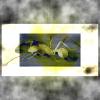V. parvus are pretty little isopods! But so shy and small.
And yeah, I have a couple wild A. vulgare that ALMOST look like A. granulatum. Certainly some granulatum are lacking big spots, too.
I'd have to say my favorite Armadillidium, coloration-wise, would be A. gestroi. Klugii, maculatum (esp. yellow-striped... not that I have any), orange variants (vulgare "orange vigor" is beautiful), and "magic potion" variants are also incredibly cool; I like spotty granulatum, too, and some granulatum have interesting base colors (a "magic potion" variant is apparently out, too).
Cubaris ... someday I'd like white tigers. Mostly because they look like trilobites. 
Edited by OhNoNotAgain, June 4 2020 - 11:03 PM.
Past & Present
Veromessor pergandei, andrei, stoddardi; Novomessor cockerelli
Camponotus fragilis, Camponotus sansabeanus (inactive), vicinus, laevigatus/quercicola, CA02
Pogonomyrmex subnitidus, P. californicus (inactive)
Liometopum occidentale (inactive); Prenolepis imparis; Myrmecocystus mexicanus (inactive); Tetramorium sp. (inactive); Lasius sp.
Termites: Zootermopsis angusticollis, and a box of drywood termites that can't be seen
Isopods: (most no longer keeping) A. gestroi, granulatum, kluugi, maculatum, vulgare; C. murina; P. hoffmannseggi, P. haasi, P. ornatus; V. parvus, P. pruinosus, T. tomentosa
Spoods: (no longer keeping) Phidippus sp., other


























